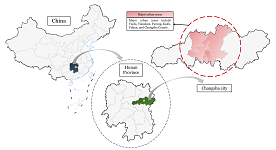
Asia Pacific Academy of Science Pte. Ltd. (APACSCI) specializes in international journal publishing. APACSCI adopts the open access publishing model and provides an important communication bridge for academic groups whose interest fields include engineering, technology, medicine, computer, mathematics, agriculture and forestry, and environment.

As China's pillar industry, the property market has suffered a considerable impact in recent years, with a decline in turnover and many developers at risk of bankruptcy. As one of the most concerned factors for stakeholders, housing prices need to be predicted more objectively and accurately to minimize decision-making errors by developers and consumers. Many prediction models in recent years have been unfriendly to consumers due to technical difficulties, high data demand, and varying factors affecting house prices in different regions. A uniform model across the country cannot capture local differences accurately, so this study compares and analyses the fitting effects of multiple machine learning models using February 2024 new building data in Changsha as an example, aiming to provide consumers with a simple and practical reference for prediction methods. The modeling exploration applies several regression techniques based on machine learning algorithms, such as Stepwise regression, Robust regression, Lasso regression, Ridge regression, Ordinary Least Squares (OLS) regression, Extreme Gradient Boosted regression (XGBoost), and Random Forest (RF) regression. These algorithms are used to construct forecasting models, and the best-performing model is selected by conducting a comparative analysis of the forecasting errors obtained between these models. The research found that machine learning is a practical approach to property price prediction, with least squares regression and Lasso regression providing relatively more convincing results.
Manufacturing sector recovery continues VIENNA, 28 March 2022 - The most recent data on global manufacturing production, covering the fourth quarter of 2021, confirm the recovery of the world economy and its manufacturing sector, albeit with seasonal, regional and sectoral differences. High technology industries had a better production performance and, therefore, recovered faster. It is clear from the data that the economic situation keeps improving as many countries gradually phase out economic and social restrictions, although new trends in the pandemic may still jeopardize the fragile recovery, as shown by recent events in South-East Asia.
With the release of the fourth quarter data, it is now possible to complete the picture for 2021 and the impacts of the global outbreak of COVID-19 over the last two years. The complete annual data confirms a major decrease in manufacturing production registered in 2020, as well as an equally impressive recovery in 2021. Global manufacturing production increased by 9.4 percent in 2021, after the pandemic-related drop of 4.2 per cent in 2020. Source from: https://www.unido.org/news/manufacturing-sector-recovery-continues-future-unpredictable
|

Prof. Mehmet Cetin
Kastamonu University,
Turkey
Polish Scientific Bibliography


1.jpg)